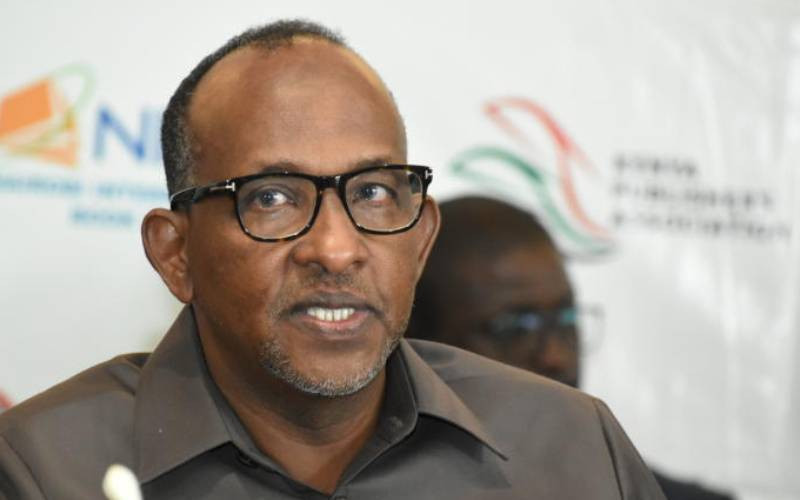Everyone have their familiar territories, places where they play and prey best. Apart from the 2007 election presidential election whose results have never been clear, National Super Alliance (NASA) leader Raila Odinga has come out as an antagonist whose bid for power resembles a prank show.
How could he drop the Canaan narrative that fast- just like that? How could he shy away from being sworn in if indeed he wants to lead Kenya or a section of it for that matter? Why does he fly out of the country when his coalition has scheduled strategic resistance stunts and rallies? From reading all his moves, Kenyans can clearly see that Raila not suitable to lead the country. It's crystal clear that opposition may just be his rightful place.
These past occurrences in Raila’s political past all seem to lead us to the same conclusion;
LDP-NARC merger
When Raila declared Mwai Kibaki Tosha in the year 2002, Kenyans were full of hope and enthusiasm. In fact, this rare unity brought a sense of belonging to every Kenyan and tribe that had felt excluded for the longest time.
The relationship and rapport were short-lived as he would go ahead to oppose the proposed constitution (Kilifi draft) in the year 2005. The opposing side won the referendum. He broke up with Mwai Kibaki. The Odinga (NO) side had used the Orange symbol to oppose whilst Kibaki's side (YES) used Banana symbol to support the document.
The outcome led to the formation of Orange Democratic Movement which enjoyed the support of several top political names who would later regroup and retreat to favorable political sides. Odinga's ODM remained. Raila and Mwai Kibaki separated as a result of his position and opposition to the proposed constitution.
NDP KANU merger
It's common for political parties to have pre-election and post-election pacts in order to be able to push their agenda. Coalitions are the best thing especially when they unite a nation. However political wandering is easily noticed and questioned. In the year 1994, Raila lost FORD-K's leadership contest to Michael Kijana Wamalwa, he joined NDP.
In the year 2000, Raila led National Development Party to join Mzee Moi's government. Kenyans were excited by this move although it didn't take a long time before Odinga led a significant number of ministers to resign from the government when it's clear that young Uhuru Kenyatta was Moi's preferred heir. This reason is clear that their self-interests were not prioritized. Since that time, he has been in several coalitions. This begs the question, what's his agenda?
Election results
Statistically speaking, Raila has been on record of losing all the elections he's contested... albeit unfairly according to him, his proxies and supporters. This has caused political standoffs and many cases resulted in electoral bodies' human resource shake-up. A section of citizenry and observers have been asking themselves, "why him all the time?"
His electoral disputes are too many such that they portray him as a "crybaby". Nowadays, citizens are very cautious with such politicians because it's dawned on them that these leaders just want to divide them in order to push their own political agenda.
KDF- AMISOM
In recent past, Raila has called for the withdrawals of KDF Troops in Somalia. They are part of Africa Mission In Somalia. These troops are mandated with the core duty of ensuring security, peace, and stability in the terror-stricken country.
Stay informed. Subscribe to our newsletter
He claims that the mission has overstayed there and should be withdrawn citing reasons such as; they have accomplished their objective, they need to come back and beef up security within our borders, the troops' illegal charcoal trading among others.President Kenyatta has shown no sign of withdrawing the troops.
 The Standard Group Plc is a
multi-media organization with investments in media platforms spanning newspaper
print operations, television, radio broadcasting, digital and online services. The
Standard Group is recognized as a leading multi-media house in Kenya with a key
influence in matters of national and international interest.
The Standard Group Plc is a
multi-media organization with investments in media platforms spanning newspaper
print operations, television, radio broadcasting, digital and online services. The
Standard Group is recognized as a leading multi-media house in Kenya with a key
influence in matters of national and international interest.
 The Standard Group Plc is a
multi-media organization with investments in media platforms spanning newspaper
print operations, television, radio broadcasting, digital and online services. The
Standard Group is recognized as a leading multi-media house in Kenya with a key
influence in matters of national and international interest.
The Standard Group Plc is a
multi-media organization with investments in media platforms spanning newspaper
print operations, television, radio broadcasting, digital and online services. The
Standard Group is recognized as a leading multi-media house in Kenya with a key
influence in matters of national and international interest.







